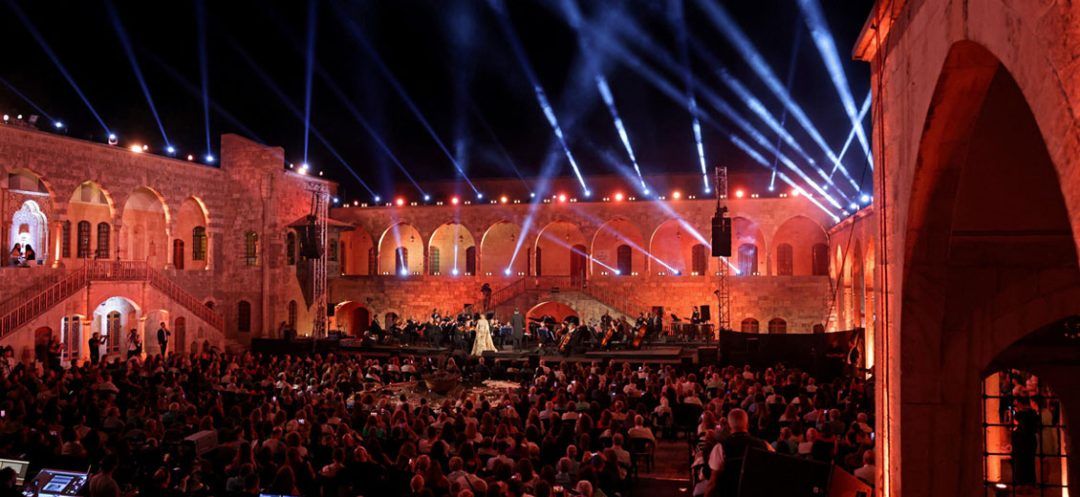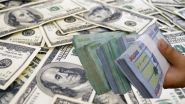
The summer festivals in Lebanon are not merely about parties, gatherings, lighting and glitz. They might have become all of that over the years, especially before the economic crisis when every town in Lebanon was buzzing with festivals, artists and festivities. However, going back to the roots of these festivals and the concept behind their creation, one uncovers a totally different reality.
The initial idea of having major festivals in Lebanon was born from the vision of late President Camille Chamoun who wanted to highlight the "elegance" of his era with well-suited celebrations. As a venue, he chose the historic Roman site of Baalbeck and entrusted First Lady Zalfa Chamoun with the organization of festivals similar to the acclaimed ones he attended in major capitals worldwide.
However, at a certain point in time, Camille Chamoun and those around him, including intellectuals, aimed to reinforce the concept of the Lebanese state within its current borders and link it to historical roots, as opposed to the nationalist concept back then. The latter argued that Lebanon’s borders were a mere historical error.
Thus came the idea of the Lebanese Nights, seen as a response to criticism that labeled the Baalbeck festivals as overly westernized. However, its deeper objective was to reshape Eastern folklore and turn it into a Lebanese one. The task of organizing these Lebanese Nights was initially given to Najib Hankash and later to Sabri Sharif. Through Sharif’s collaboration with the Rahbani brothers (including Fairuz), this initiative became a transformative milestone in Lebanon's cultural folklore landscape.
Therefore, the campaign was successful in bringing festivals to regions across Lebanon to promote the country’s folklore. Unfortunately, in this context, the Byblos festivals were overlooked. Raymond Eddé (former leader of the National Bloc and the opposition) created these festivals to highlight the town of Byblos and boost its tourism. While the temple of Baalbeck is steeped in history, so is the citadel of Byblos.
As for the Beiteddine Art Festival, its aim was also political. Established a year after the Mountain War, its objective was to bring peace back to the Chouf mountains and calm the situation, replacing gunfire with cultural revival.
Each festival had the objective of addressing the concept of modern Lebanon distinctly, away from direct marketing, by instead fostering a connection between positive eras and a thriving artistic culture.
Over the years, festivals across Lebanon have evolved and diversified, each with its unique objectives. Some have even turned into electoral campaigns for the wives of MPs and leaders. However, the main goal of all the festivals in the Land of the Cedars is to strengthen the concept of post-independence Lebanon and stand against those who reject the ideas of pluralism, openness and the festive Mediterranean mood.
This has been the essence of the festivals and will remain so. As such, they are as important as any other form of political resistance.
The initial idea of having major festivals in Lebanon was born from the vision of late President Camille Chamoun who wanted to highlight the "elegance" of his era with well-suited celebrations. As a venue, he chose the historic Roman site of Baalbeck and entrusted First Lady Zalfa Chamoun with the organization of festivals similar to the acclaimed ones he attended in major capitals worldwide.
However, at a certain point in time, Camille Chamoun and those around him, including intellectuals, aimed to reinforce the concept of the Lebanese state within its current borders and link it to historical roots, as opposed to the nationalist concept back then. The latter argued that Lebanon’s borders were a mere historical error.
Thus came the idea of the Lebanese Nights, seen as a response to criticism that labeled the Baalbeck festivals as overly westernized. However, its deeper objective was to reshape Eastern folklore and turn it into a Lebanese one. The task of organizing these Lebanese Nights was initially given to Najib Hankash and later to Sabri Sharif. Through Sharif’s collaboration with the Rahbani brothers (including Fairuz), this initiative became a transformative milestone in Lebanon's cultural folklore landscape.
Therefore, the campaign was successful in bringing festivals to regions across Lebanon to promote the country’s folklore. Unfortunately, in this context, the Byblos festivals were overlooked. Raymond Eddé (former leader of the National Bloc and the opposition) created these festivals to highlight the town of Byblos and boost its tourism. While the temple of Baalbeck is steeped in history, so is the citadel of Byblos.
As for the Beiteddine Art Festival, its aim was also political. Established a year after the Mountain War, its objective was to bring peace back to the Chouf mountains and calm the situation, replacing gunfire with cultural revival.
Each festival had the objective of addressing the concept of modern Lebanon distinctly, away from direct marketing, by instead fostering a connection between positive eras and a thriving artistic culture.
Over the years, festivals across Lebanon have evolved and diversified, each with its unique objectives. Some have even turned into electoral campaigns for the wives of MPs and leaders. However, the main goal of all the festivals in the Land of the Cedars is to strengthen the concept of post-independence Lebanon and stand against those who reject the ideas of pluralism, openness and the festive Mediterranean mood.
This has been the essence of the festivals and will remain so. As such, they are as important as any other form of political resistance.
Read more



Comments